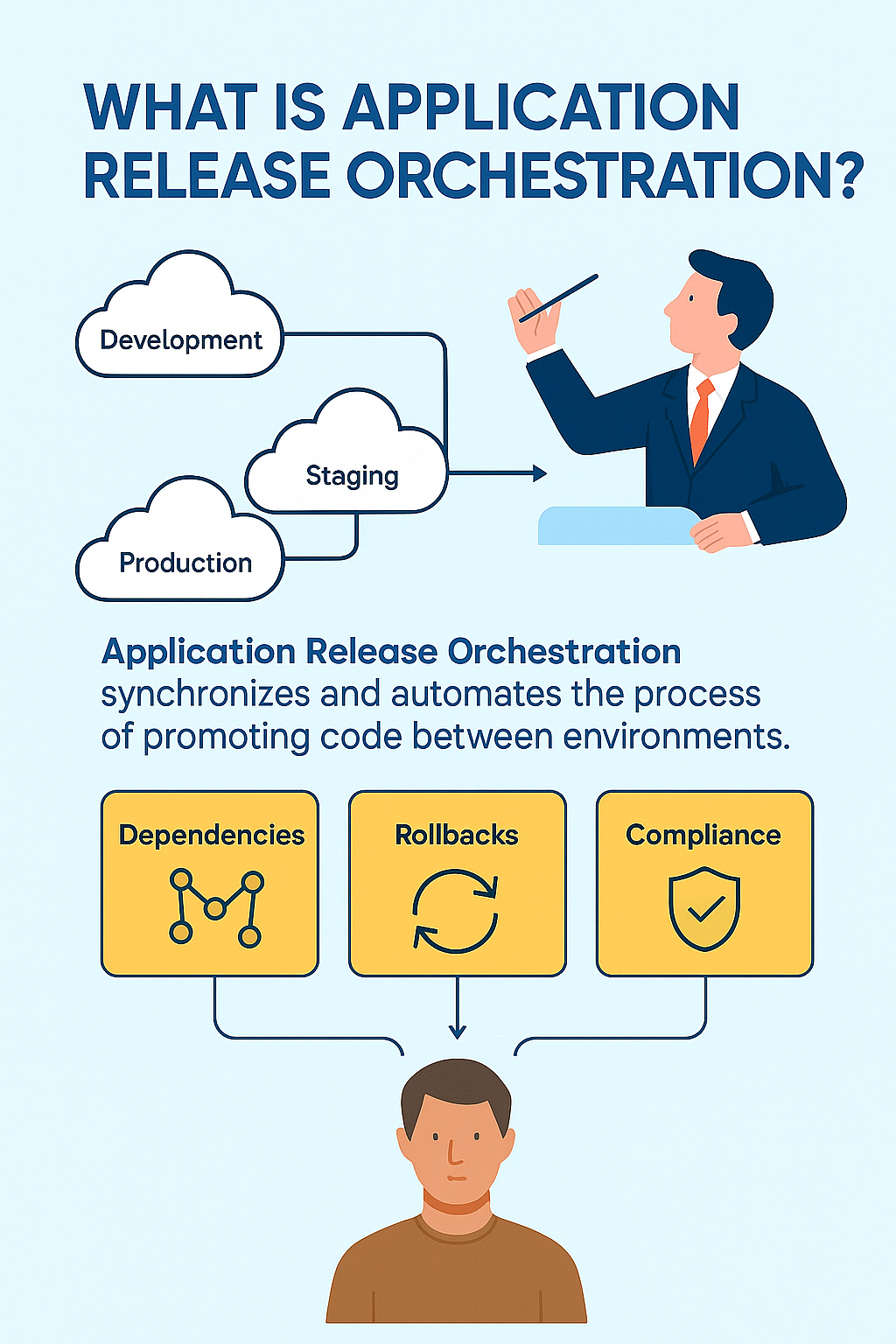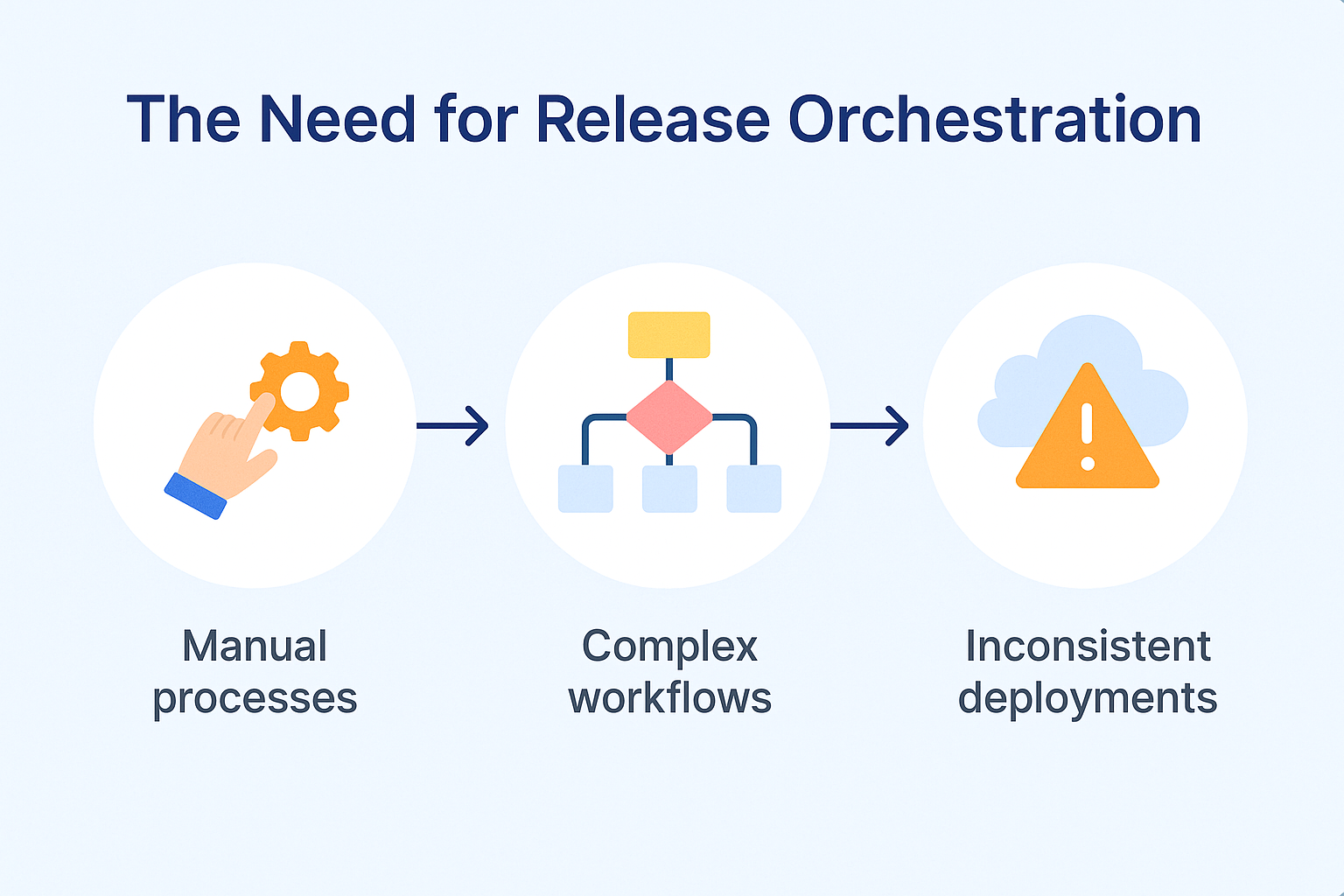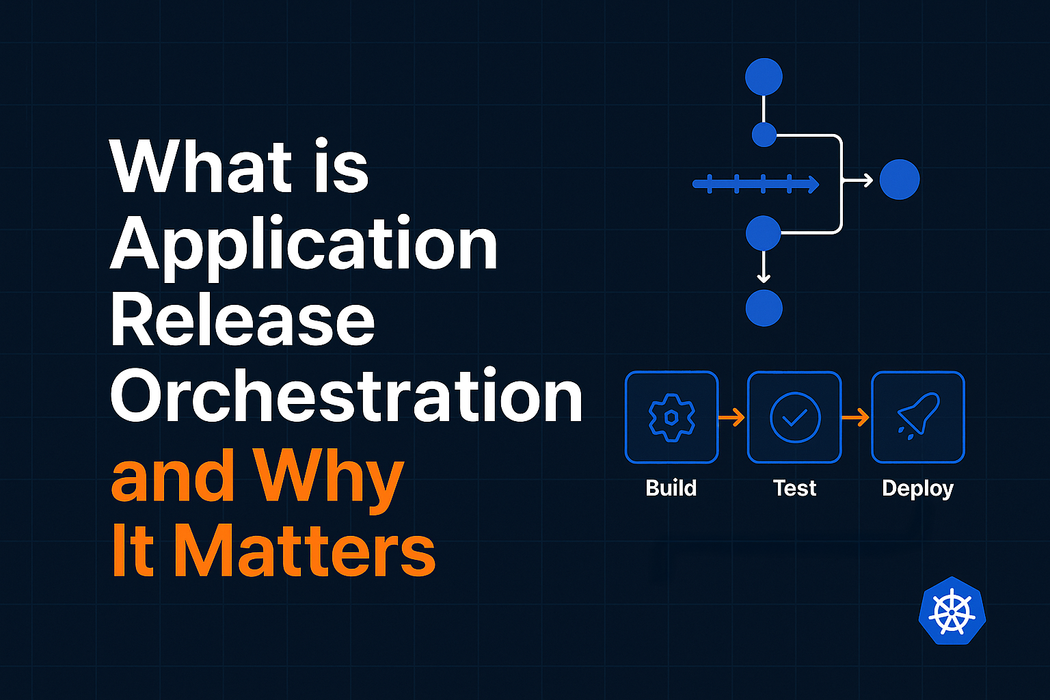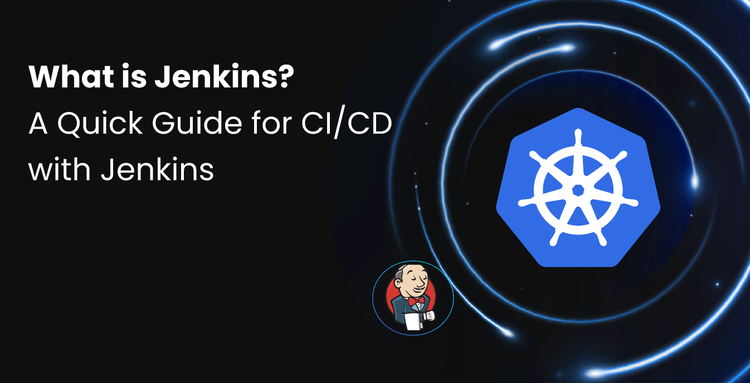1. ARO automates and governs the release process, ensuring consistent, low-risk deployments across environments like Dev, QA, Staging, and Production.
2. Modern software releases are complex—often involving microservices, multi-cluster setups, approvals, and environment-specific validations. ARO helps coordinate them all.
3. Balance speed and compliance with policy-driven automation—ARO embeds security scans, approvals, and rollback plans into the delivery workflow.
4. Cross-team collaboration improves significantly as ARO provides a shared source of truth for Dev, QA, Ops, and Security—reducing miscommunication and delays.
5. Tools like Devtron and Spinnaker make ARO accessible, offering GitOps-native integrations, visual workflows, and multi-cluster support for scalable, reliable delivery.
In the fast-paced and ever-evolving world of software delivery, where agility and uptime are critical, application release orchestration (ARO) has emerged as a key capability in the modern DevOps toolkit. But what does it mean, and why is it capturing so much attention, especially from teams working with Kubernetes and cloud-native architectures? This article explores the release orchestration meaning in depth, breaking down its core principles, benefits, and relevance to teams that demand high-velocity, low-risk software delivery.
As organizations transition to microservices, hybrid infrastructure, and distributed engineering teams, the need for standardized and streamlined software releases has become more apparent than ever. ARO not only bridges the gap between development and operations but also brings alignment across compliance, security, and business teams by offering visibility and governance at each step.
What Is Application Release Orchestration?
Application release orchestration is the process of automating, sequencing, and governing the steps involved in releasing applications into different environments—from development and staging to production. It goes beyond simple deployment automation to provide a structured and consistent approach for managing the lifecycle of application releases.
Unlike traditional CI/CD tools that handle building and delivering artifacts, release orchestration ensures that each release follows a defined workflow, often incorporating validation gates, manual approvals, rollback plans, and environment-specific logic. This makes it especially crucial in environments with high compliance requirements, microservice dependencies, and complex deployment topologies.
Think of application release orchestration as the central nervous system of your delivery pipeline. It ensures all the right parts move in the right order and at the right time, coordinating across tools, teams, and systems. It orchestrates not just deployments, but also environment-specific promotions, integrations with testing frameworks, change management, and observability systems, all in a repeatable manner.

Why Application Release Orchestration Matters
1. Complex Releases Require Coordination at Scale
In today’s era of distributed systems, a typical software release isn’t just pushing a binary. It might involve:
- Updating multiple microservices
- Changing environment variables
- Performing schema migrations
- Modifying infrastructure as code (IaC)
- Notifying dependent services
- Coordinating with QA and SREs
Coordinating all these moving parts—especially when releases must be synchronized across multiple Kubernetes clusters—demands more than ad-hoc scripts. Application release orchestration provides a declarative way to represent and execute these workflows reliably and consistently.
Modern ARO platforms empower organizations to standardize workflows, reducing release variability across teams and business units. Whether a team is deploying twice per week or ten times per day, orchestration ensures consistency and minimizes human error.
2. Balancing Speed with Governance
Enterprises often operate in regulated or security-sensitive industries. While development teams want to move fast, compliance and security teams need control. Application release orchestration introduces policy-driven automation, so you can have both.
Examples include:
- Requiring InfoSec sign-off before production deployments
- Enforcing code freeze periods
- Triggering automated security scans before deployment
- Logging approval workflows and version changes for audit
By embedding these controls into the orchestration flow, organizations reduce risk without slowing down innovation. More importantly, they build trust across functions—stakeholders know that safeguards are not just reactive, but built into the fabric of delivery.
3. Consistent Promotion Through Environments
For most teams, code doesn’t go from Git to production in one leap. It moves through a series of environments—development, QA, UAT, staging—each with unique validation steps.
Without orchestration, teams may rely on inconsistent scripts or manual handoffs, increasing the likelihood of:
- Configuration drift
- Missed steps
- Human error
- Environment-specific bugs
Release orchestration ensures that promotions across environments are consistent and traceable. Whether it’s a simple app or a complex SaaS platform with dozens of services, orchestration provides the reliability needed for repeatable delivery. And with GitOps-native integrations, ARO solutions can detect and manage drift, ensuring that environments remain predictable.

4. Auditability, Rollback, and Compliance
When a deployment fails—or worse, causes a production outage—teams need to respond quickly. Application release orchestration offers:
- Full audit trails (who approved what, and when)
- Rollback automation with version tracking
- Change tracking, policy enforcement, and logging
- Integration with compliance dashboards and observability tools
This not only helps in incident response but also satisfies external compliance requirements, such as SOC2, HIPAA, or GDPR. ARO ensures that the release process is not a black box but an auditable, repeatable pipeline of documented steps.
5. Improving Cross-Team Collaboration
In many organizations, dev, QA, operations, and security teams work in silos. This often leads to miscommunications, bottlenecks, and delays during releases. These communication breakdowns cause frustration, reduce accountability, and introduce avoidable risk into software delivery.
Release orchestration acts as a shared platform, providing visibility, accountability, and alignment across stakeholders. Developers know exactly when their changes are going out. QA teams can hook in their validation checks. Operations teams can monitor deployments with confidence. Everyone works from a common source of truth.
By integrating with tools like Slack, JIRA, GitHub, and CI/CD systems, ARO becomes the connective tissue across platforms. This not only fosters collaboration but also democratizes access to release intelligence for all involved.

Real-World Scenarios That Demonstrate Its Power
- Coordinated Feature Launch: Rolling out a feature that touches both frontend and backend services? Release orchestration ensures the backend deploys before the frontend to prevent UI/API mismatches.
- Regulatory Approvals: In sectors like finance or healthcare, releases must be signed off by a compliance team. Orchestration tools integrate approvals directly into the deployment flow, eliminating manual sign-offs via email or spreadsheets.
- Environment-Specific Behavior: Need different testing steps in QA and staging? Orchestration handles conditional workflows with environment-specific rules, ensuring environment parity and repeatability.
- Progressive Rollouts: Want to deploy to a canary environment before full production? Orchestration sequences this intelligently, pausing if thresholds aren’t met or if rollback conditions are triggered. Canary strategies, blue-green deployments, and phased releases become easily configurable.
- Disaster Recovery and Rollbacks: If a release impacts performance or introduces regressions, ARO platforms can automate rollback procedures. Teams can revert to a last-known-good state with minimal disruption, restoring trust quickly.
- Multi-Cluster Synchronization: For large enterprises running across multiple Kubernetes clusters and cloud regions, ARO ensures consistent and synchronized releases across tenants and geographies.
Popular Tools for Application Release Orchestration
Here are some widely used platforms and tools that support application release orchestration across modern DevOps environments:
- Spinnaker: Originally developed by Netflix, Spinnaker is a multi-cloud open-source CD tool with strong support for complex deployment strategies and robust pipeline modeling.
- Devtron: A Kubernetes-native open-source release orchestration platform. Devtron offers an end-to-end software distribution hub, CI/CD integration, policy-based approvals, GitOps-driven delivery, and multi-cluster support, all through an intuitive dashboard that reduces onboarding friction and boosts visibility.
- Argo Workflows & Argo CD: These Kubernetes-native tools support declarative orchestration of releases, integrating well into GitOps workflows with scalable multi-step pipelines.
- Flux: A GitOps controller for Kubernetes that handles progressive delivery and release orchestration, especially for teams prioritizing declarative workflows.
Each tool brings unique strengths, but Devtron stands out for teams operating in Kubernetes ecosystems looking for unified visibility, simplified management, and advanced governance.
Final Thoughts
Application release orchestration is no longer a luxury reserved for tech giants; it’s a necessity for any team working at scale. Especially in Kubernetes-centric environments, where microservices, infrastructure-as-code, and GitOps create intricate interdependencies, orchestrating releases is critical for safe, reliable delivery.
By implementing release orchestration, teams gain confidence, clarity, and control over their delivery pipelines. It empowers developers to release often, stakeholders to trust the process, and organizations to scale without fear. In a world where delivery velocity is tied to customer satisfaction and market competitiveness, ARO becomes a differentiator.
If you’re looking to modernize your software delivery, start with your release process. Because even the best code means nothing until it’s delivered to users safely, quickly, and consistently.
FAQ
What is Application Release Orchestration (ARO)?
Application Release Orchestration (ARO) is the automation and governance of application releases across different environments, ensuring consistent, low-risk, and scalable deployments—especially in Kubernetes and microservices-based systems.
How is ARO different from traditional CI/CD?
While CI/CD handles building and deploying artifacts, ARO focuses on orchestrating the entire release process, including approvals, validation gates, environment-specific workflows, rollbacks, and compliance tracking.
Why do modern DevOps teams need ARO?
As release processes grow complex—with microservices, multiple clusters, and compliance needs—ARO helps coordinate steps, enforce policies, prevent errors, and promote code safely through Dev, QA, Staging, and Prod.
What are the key benefits of using ARO?
Key benefits include:
- Reduced release errors and downtime
- Automated rollbacks and approvals
- Improved auditability and compliance
- Environment consistency
- Better cross-team collaboration and visibility
What tools support Application Release Orchestration?
Popular tools include Devtron, Spinnaker, Argo Workflows/CD, and Flux. Devtron stands out for Kubernetes-native environments with built-in GitOps, visual pipelines, and enterprise-grade governance.











